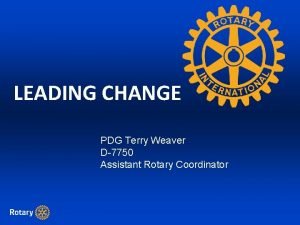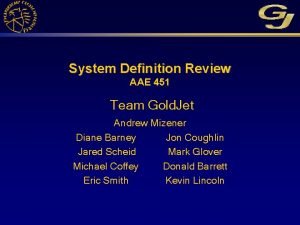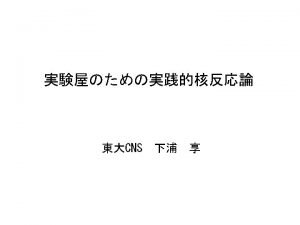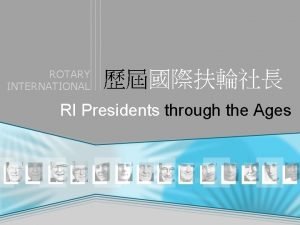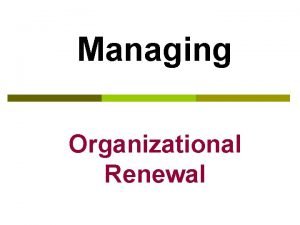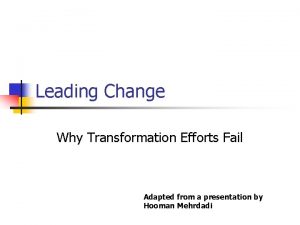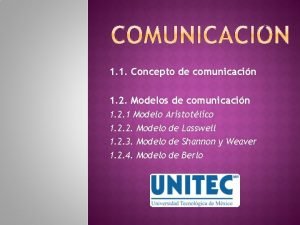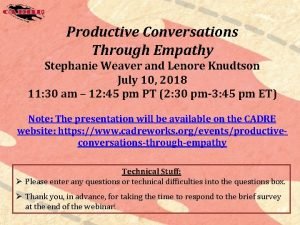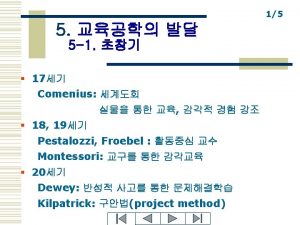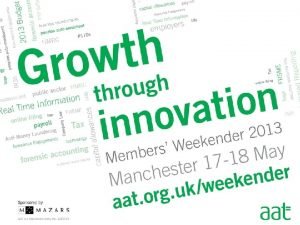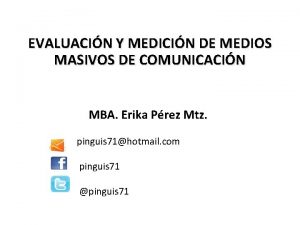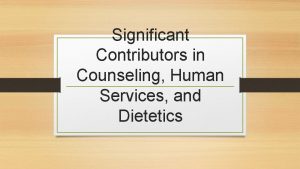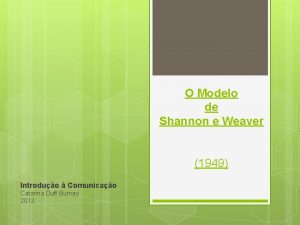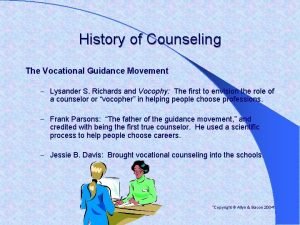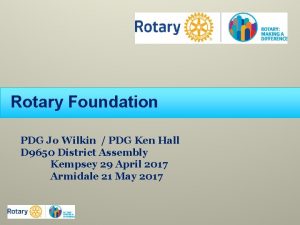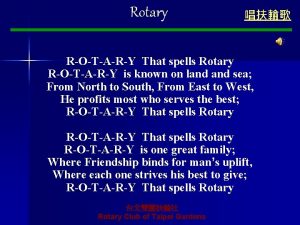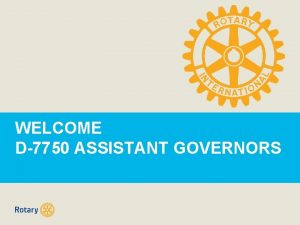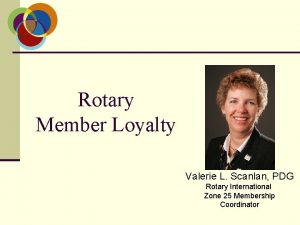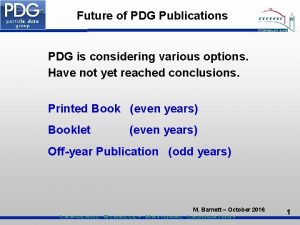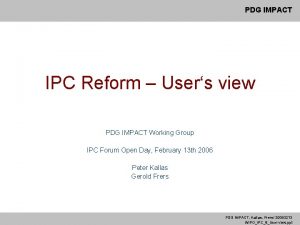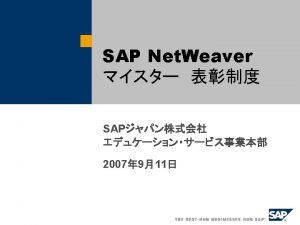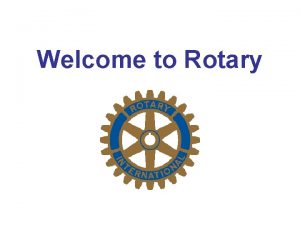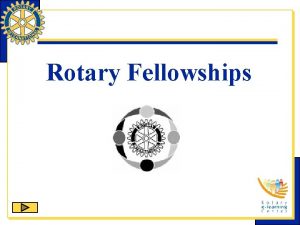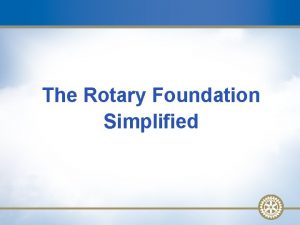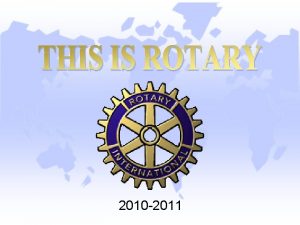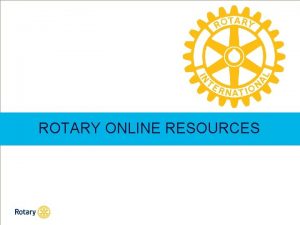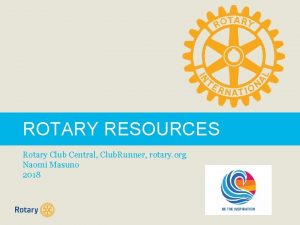LEADING CHANGE PDG Terry Weaver D7750 Assistant Rotary




































- Slides: 36

LEADING CHANGE PDG Terry Weaver D-7750 Assistant Rotary Coordinator

Why Organizations Fail to Perform They Don’t Get It They don’t understand why it’s important Winning Hearts & Minds Leading Change They Don’t Know How • Selection • Training • Coaching They Don’t Care Or care enough to make a difference Training & Coaching

Why Organizations Fail to Perform They Don’t Get It They don’t understand why it’s important Winning Hearts & Minds They Don’t Care Or care enough to make a difference Leading Change They Don’t Know How • Selection • Training • Coaching Leadership & Inspiration Training & Coaching


Two Things Rotarians Don’t Like The way things are CHANGE

Errors in Leading Change 1. Allowing Too Much Complacency (Rotary’s #1 Enemy) 2. Failing to Create a Sufficiently Powerful Guiding Coalition 3. Underestimating the Power of Vision (or the vacuum if one is lacking) 4. Undercommunicating the Vision by a Factor of 10 (or 100 or even 1, 000) 5. Permitting Obstacles to Block the New Vision (including elder naysayers) 6. Failing to Create Short-Term Wins

Error #1 - Allowing Too Much Complacency 1. 2. 3. 4. Insufficient sense of urgency Lack of visible crises Low expectations Acceptance of mediocrity

Error #1 - Allowing Too Much Complacency

Error #2 - Failing to Create a Sufficiently Powerful Guiding Coalition 1. Not including influential “thought leaders” from the membership 2. Getting hijacked by group dynamics vs. early “consensus-building” conversations Y E with key individuals K

Error #3 - Underestimating the Power of Vision 1. Plans, programs, procedures & campaigns in lieu of Vision 2. A Vision that takes more than 5 minutes to describe 3. A Vision that isn’t sufficiently compelling to excite and inspire the membership

Error #4 - Undercommunicating the Vision by a Factor of 10 (or 1000) 1. Making only a few announcements or sending out only a few emails • Surprised when people don’t seem to understand 2. President making speeches – Board silent • Not enough reinforcement 3. High profile members’ behavior is counter to the Vision

Error #5 - Permitting Obstacles to Block the New Vision 1. Lack of organizational support (an effective membership committee) 2. Lack of recognition systems 3. Lip service (or worse) from influential members 4. Elder naysayers

Error #6 - Failing to Plan for & Create Short-Term Wins 1. 2. 3. 4. No compelling evidence of progress Urgency flags Fatigue sets in Vision is forgotten

CONSEQUENCES?

6 - Stage Process for Change 1. 2. 3. 4. 5. Workbook Inside Cover Establishing a sense of urgency Creating the guiding coalition Developing a Vision and Strategy Communicating the change Vision Empowering (expecting) a broad base of members to take action 6. Generating short-term wins

Stage 1 – Establish a Sense of Urgency 1. Recalibrate expectations – Status Quo is not an acceptable future Doing more of what we’re doing will get us more of what we’ve got 2. Eliminate “happy talk” – Don’t end with “but we’re OK” 3. Create a necessity for a change 4. If needed, create a CRISIS

My Change Leadership Challenge 1. Describe the most pressing change leadership challenge in your club right now a) Situation or problem that needs to be solved b) The change you’d like to make – how would you like this situation to be different? Hint: Examples on P 5 2 minutes Workbook Page 1

Stage 2 – Creating a Powerful Guiding Coalition 1. Assemble a small (2 -3) group of likeminded thought leaders 2. Create trust 3. Develop a common goal

My Guiding Coalition 1. Name members of your Guiding Coalition & identify their roles Workbook Page 1 2 minutes

Stage 3 – Creating a Vision VERSION #1: "I believe that this nation should Our goal is to reduce our mean time to repair commit itself to achieving the goal, parameters so that they are perceptually lower than all major competitors inside the United before this decade is out, of landing States and out. In a similar vein, we have a man onnew-product the moon and returning targeted development cycle times, order process times, and other customerhim safely to the earth. ” relevant processes for change. VERSION #2: John F. Kennedy We are going to become faster than anyone in our industry at satisfying customer needs

Stage 3 – Creating a Vision VERSION #1: Our Rotary club will continue its legacy of community service, utilizing our influential membership to assist agencies in our community to achieve their missions VERSION #2: Our Rotary club will be the growing, effective, vibrant force in our community, making it a better place to live

Stage 3 – Creating a Vision Characteristics of an Effective Vision 1. Imaginable -- A picture of the future 2. Desirable -- Appeals to the long-term interests of stakeholders 3. Feasible -- Realistic, attainable goals 4. Focused -- Guides decision making 5. Flexible -- Allows initiative 6. Communicable -- Can be successfully explained within five minutes

My Vision 1. Write a Vision for the Change Leadership situation you chose Workbook Page 1 Hints: Start with “I See…. . ” Examples on Page 6 2. Be prepared to present your Vision 3 minutes

Stage 4 – Communicating the Vision

Stage 4 – Communicating the Vision Key elements in the effective communication of Vision 1. Simplicity -- All jargon and technobabble eliminated 2. Metaphor, analogy, and example -- A verbal picture 3. Multiple forums -- Big meetings and small, memos and newsletters, formal and informal interaction 4. Repetition 5. Leadership by example -- Behavior from important people 6. Explanation of seeming inconsistencies

KEYS TO EFFECTIVE COMMUNICATION Stage 4 – Communicating the Vision – Situation • Explain current facts – Problem • “The problem with that is…. . ” – Implication • “That means……” – Need • “Therefore, we need to……”

SPIN Example Stage 4 – Communicating the Vision – Situation “Our club has been on a steady downward membership trend, losing an average of 2 members per year for the past 5 years. ” – Problem “The problem with that is the club has learned to accept membership decline as a natural occurrence and has forgotten that growth, not attrition, is the goal. ”

SPIN Example Stage 4 – Communicating the Vision – Implication “If we stay on this track, we’re going to find ourselves with steadily smaller meetings and potential members asking, “Is this really a group I want to be a part of? ” “Once we lose the ability to attract members, it’s only a matter of time until we all age out together and the club goes out of business. ”

SPIN Example Stage 4 – Communicating the Vision – Need “Therefore, we need to help the members understand that growing the club is essential to our survival. “We need to help them understand that attracting more members is in everyone’s best interest, including the new members. “We need to provide a compelling VISION of a growing, vibrant club and inspire them to make it that way. ”

SPIN Example Your Vision Communication Plan – Situation • Explain current facts – Problem • “The problem with that is…. . ” – Implication • “That means……” – Need • “Therefore, we need to……” Page 2

Communicating the Vision 1. Build a SPIN script – same situation 2. Be prepared to present your SPIN script 4 minutes

Stage 5 -- Empowering Others to Act 1. Communicate a sensible vision to members -- If members have a shared sense of purpose, it’s easier to initiate actions to achieve that purpose 2. Provide the training members need -- Without the right skills and attitudes, people feel disempowered 3. Provide data and scorecards to track progress 4. Confront members who undercut your vision -- Nothing disempowers people like a bad example

Stage 6 – Planning & Creating Short-Term Wins The role of short-term wins 1. 2. 3. 4. Provide evidence that the effort is worth it Reward achievers Helps fine-tune vision and strategies Clear improvements make it difficult to block change 5. Keep believers on board 6. Build momentum

Antidotes Summary Classic Error Solution Allowing Too Much Complacency (Rotary’s #1 Enemy) Establish a Sense of Urgency (Eliminate "Happy Talk", Create a Crisis) Failing to Create a Sufficiently Powerful Guiding Coalition Create a Powerful Guiding Coalition (a small group of thought leaders) Underestimating the Power of Vision (or the vacuum if one is lacking) Create a Vision (Characteristics of an effective Vision) Undercommunicating the Vision by a Factor of 10 (or 100 or even 1, 000) Communicate the Vision (Key Elements of effective communication) (Situation, Problem, Implication, Need) Permitting Obstacles to Block the New Vision (including elder naysayers) Empower others to act on the Vision (Confront those who undercut the Vision) Failing to Create Short-Term Wins Celebrate Short-Term Wins (Congratulate achievers, build momentum)


BREAK
 Dr terry weaver
Dr terry weaver Bobbin leading and flyer leading
Bobbin leading and flyer leading Their eyes were watching god pdg
Their eyes were watching god pdg Pdg bethe bloch
Pdg bethe bloch Pdg microsoft
Pdg microsoft Perbedaan opa npm nps
Perbedaan opa npm nps Pdg-670
Pdg-670 Fahrenheit 451 pdg
Fahrenheit 451 pdg Pdg
Pdg Microsoft pdg
Microsoft pdg Microsoft pdg
Microsoft pdg Pdg advisor
Pdg advisor Mct intranet
Mct intranet Pdg lbl
Pdg lbl Chapman microsoft office
Chapman microsoft office Pdg dens
Pdg dens Leading change and organizational renewal
Leading change and organizational renewal Leading change and organizational renewal
Leading change and organizational renewal Nitcar
Nitcar Kotter why transformation efforts fail
Kotter why transformation efforts fail Leading through change presentation
Leading through change presentation Weaver 2001
Weaver 2001 The landlady billy weaver picture
The landlady billy weaver picture Site:slidetodoc.com
Site:slidetodoc.com Productive conversations take real empathy
Productive conversations take real empathy Transmitter shannon weaver
Transmitter shannon weaver The weaver of peace kenning
The weaver of peace kenning Ifrs 102
Ifrs 102 Phenomenon model
Phenomenon model Diferencia entre información y comunicación
Diferencia entre información y comunicación Storybook weaver deluxe
Storybook weaver deluxe Landlady author
Landlady author Anna y. reed and eli weaver
Anna y. reed and eli weaver Weaver duster worm
Weaver duster worm Modelo de shannon y weaver.
Modelo de shannon y weaver. Shannon e weaver
Shannon e weaver History of counselling psychology pdf
History of counselling psychology pdf
